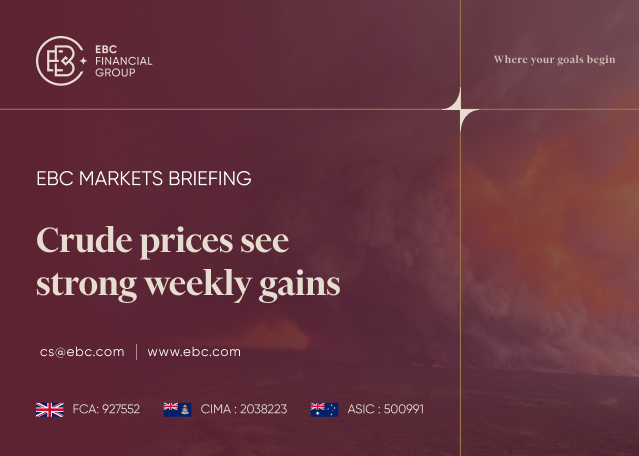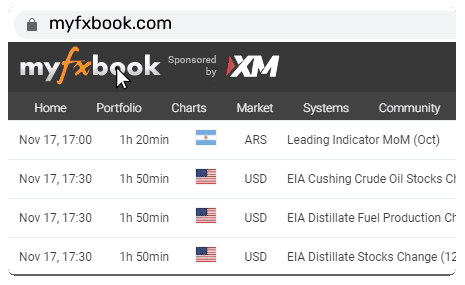5 Ways EBC Sees Indonesia’s Rate Cut Shaping Emerging Markets
Indonesia’s recent decision to reduce interest rates by 25 basis points to 5.50% has caught the attention of traders and investors worldwide. At EBC, we are committing our efforts to decode what this move means—not only for Indonesia but also for the broader landscape of emerging markets. Here are five key ways this rate cut could reshape the economic and trading environment.
1. Stimulating Growth Amid Slowing Momentum
Indonesia’s GDP growth has cooled to 4.87% in the first quarter of 2025, marking the lowest pace in three years. The rate cut by Bank Indonesia (BI) aims to reverse this slowdown by encouraging borrowing and investment. Lower rates typically ease financing costs for businesses and consumers, potentially accelerating economic activity. However, the challenge lies in balancing this stimulus with inflation controls and currency stability.
2. Strengthening the Rupiah While Managing Inflation
One reason BI felt confident cutting rates is the controlled core inflation rate of 2.5%. Additionally, the Rupiah has recovered by roughly 3% since April lows, providing some breathing room. This recovery, alongside policy adjustments like increasing foreign bank ownership limits from 30% to 35%, signals an attempt to bolster foreign investment and liquidity. Maintaining this delicate balance is crucial, as excessive loosening could jeopardise the Rupiah’s strength and market trust.
3. Navigating the Complex BRICS Connection
Indonesia’s recent entry into the BRICS bloc adds a significant geopolitical and economic dimension to its monetary policy. The bloc, comprising countries that represent nearly 28% of global GDP and 45% of the world population, offers Indonesia access to $150 billion in annual trade with members. Through institutions like the New Development Bank, Indonesia may obtain cheaper infrastructure financing, reducing dependence on the dollar.
Yet, this relationship is a double-edged sword. As EBC Financial Group (UK) CEO David Barrett observes, “This is monetary policy as high-stakes economic statesmanship. BI isn’t just setting rates, it’s also navigating a dual transformation: balancing domestic political priorities with global market confidence while walking the BRICS tightrope. Rate cuts may fuel Indonesia President, Prabowo Subianto’s growth ambitions, but they also test whether BRICS can deliver tangible trade gains or just geopolitical baggage.”
4. Opportunities and Risks for Traders
From a trading perspective, the Rupiah’s rebound is promising but still fragile. Barrett highlights that “Financial markets are watching this high-wire act closely, the IDR’s resilience will hinge on BI’s ability to convert BRICS’ alternative financing into real economic buffers. For traders, this creates layered opportunities – from currency plays to sector-specific bets – but ordinary Indonesians will feel the impacts through everything from loan rates to import prices.”
Currency volatility could open tactical plays, while sectors like exports, construction, and consumer finance—especially those linked to BRICS infrastructure loans—may show differentiated performance. Traders should monitor how policies ripple through these industries to position themselves effectively.
5. A Reference Point for Other Emerging Economies
Indonesia’s rate cut might serve as a benchmark for other emerging markets grappling with global uncertainty. Success depends on BI’s skill in maintaining investor confidence without sparking inflation or currency instability. The way Indonesia manages this balancing act could inform monetary strategies elsewhere, offering a blueprint for stimulating growth amid external pressures.
EBC's Commitment to Traders and Markets
At EBC, we are committing our efforts to track these developments closely. Our goal is to help traders interpret the evolving macroeconomic signals, anticipate capital movements, and seize new opportunities in emerging markets.
Disclaimer: This material is for general information purposes only and is not intended as (and should not be considered to be) financial, investment or other advice on which reliance should be placed. No opinion given in the material constitutes a recommendation by EBC or the author that any particular investment, security, transaction or investment strategy is suitable for any specific person.





















